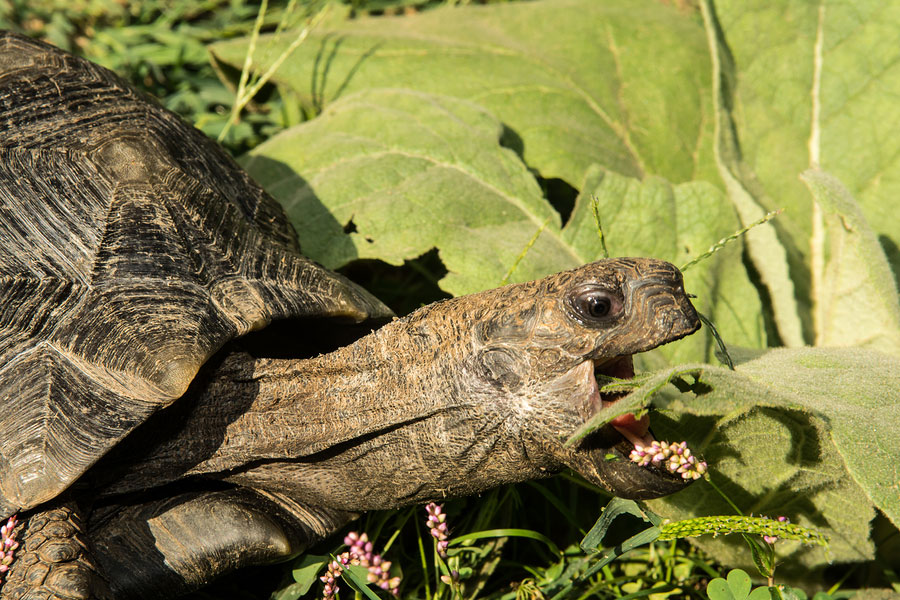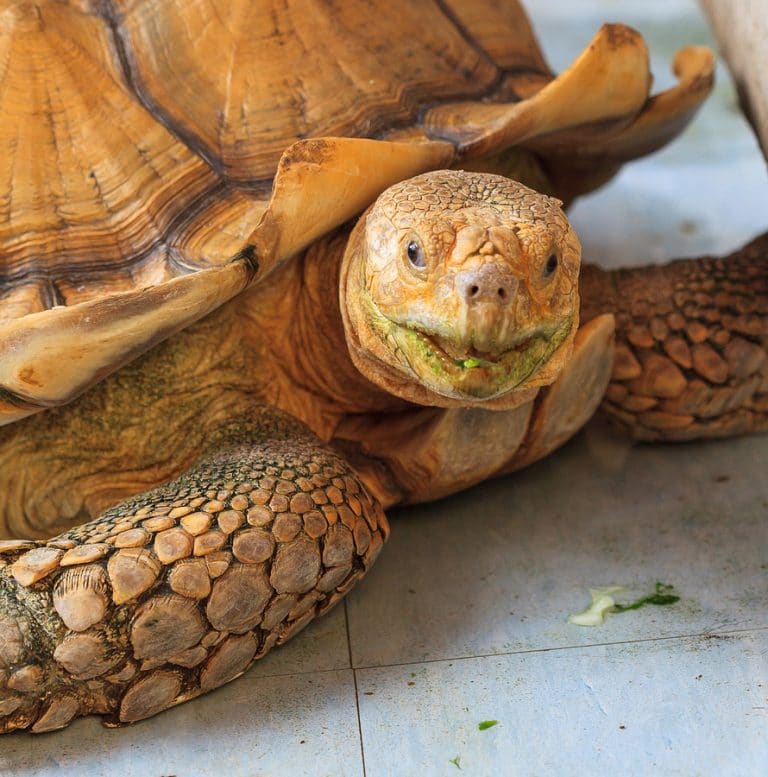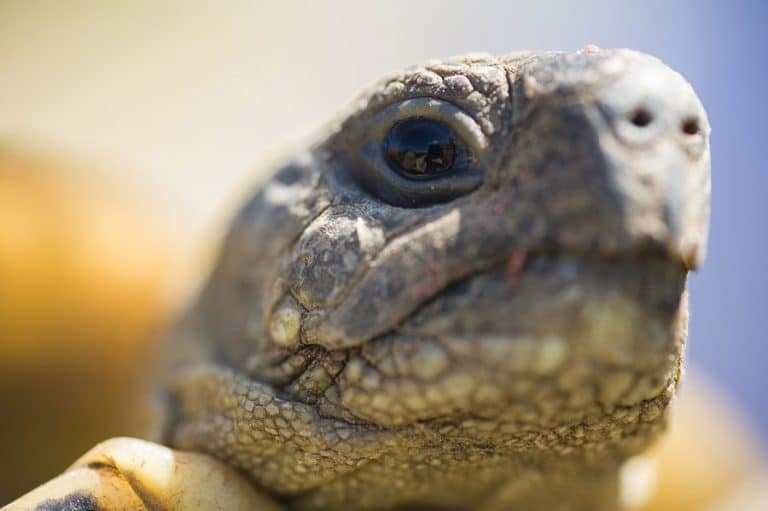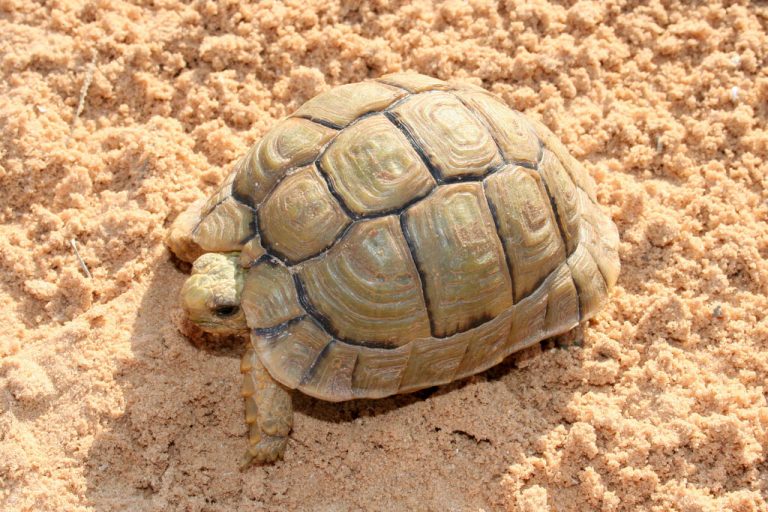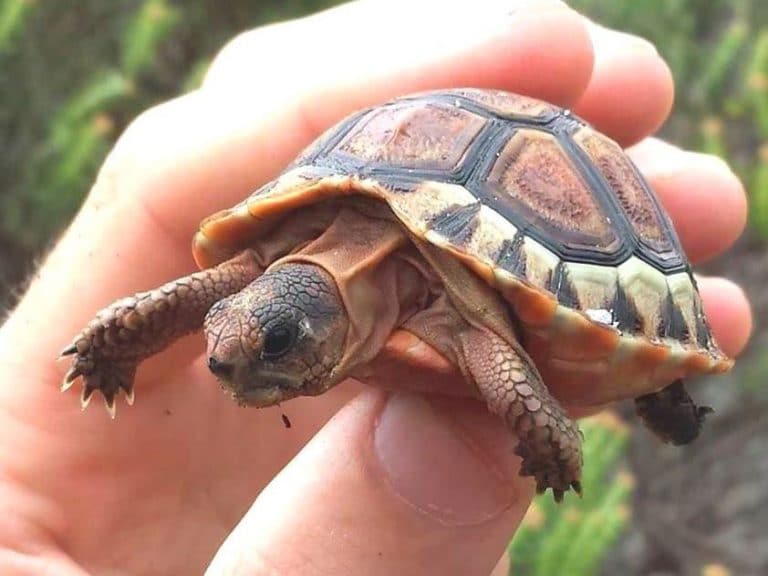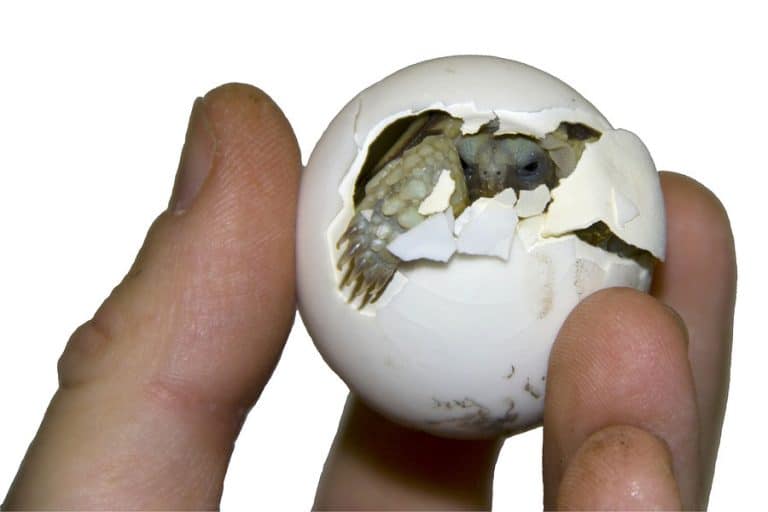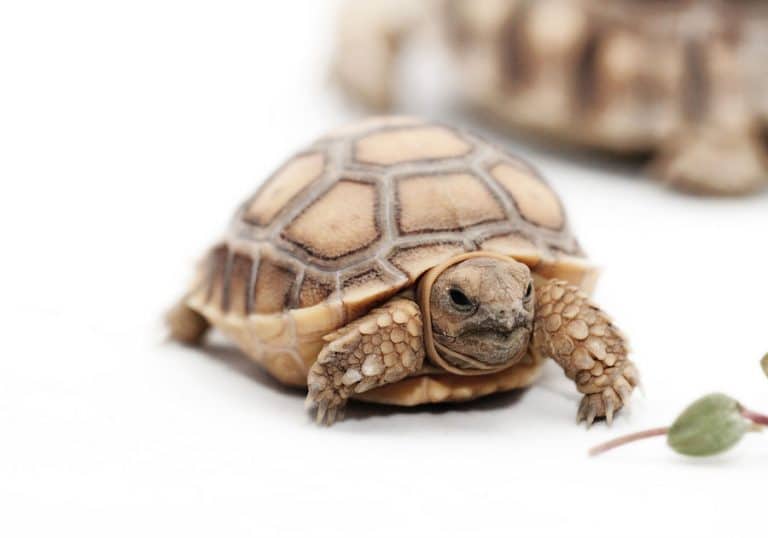Asian Forest Tortoise
Scientific Classification
| Kingdom: | Animalia |
| Phylum: | Chordata |
| Class: | Reptilia |
| Order: | Testudines |
| Family: | Testudinidae |
| Genus: | Manouria |
| Species: | M. emys |
| Binomial name: | Manouria emys |
You can call the Burmese tortoise, Manouria Emys, by many names like Asian brown, Asian Forest, Burmese Mountain, Burmese Black, Burmese Brown, and six-legged tortoise. Asian Forest Tortoise is the fourth largest tortoise in the world. The weight of an adult in the wild is around 70 pounds. Captive tortoises can reach 100 pounds in total weight and a length of 2 feet.
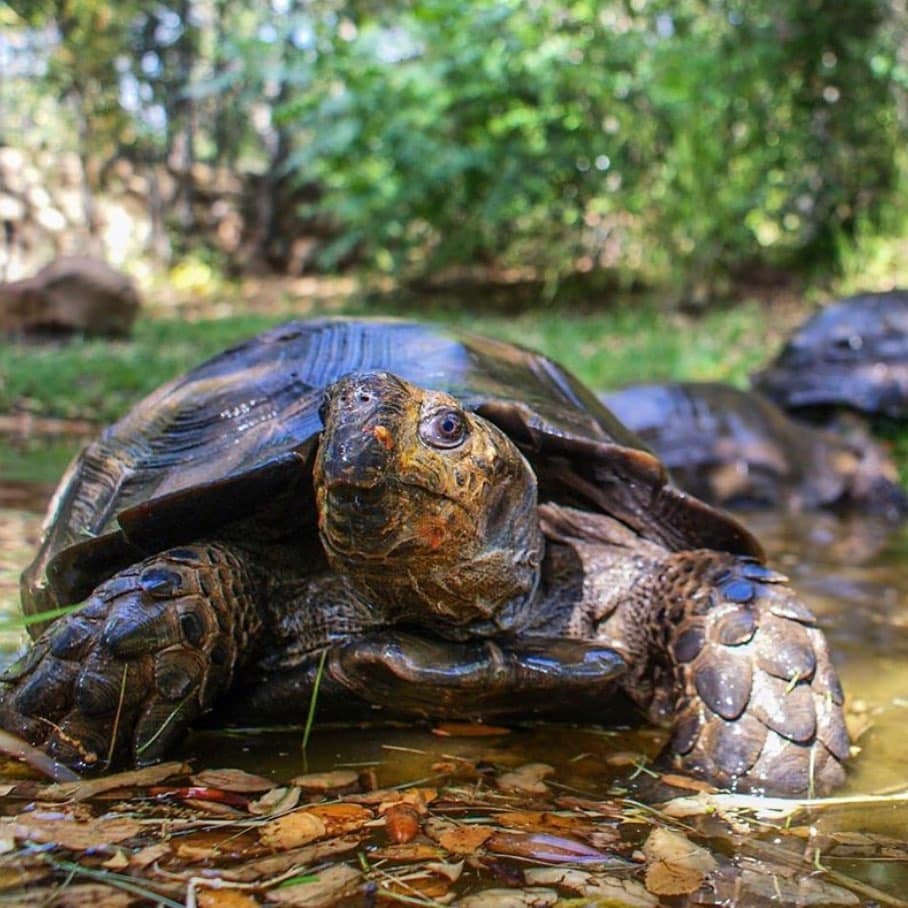
Anatomy
Adult males generally reach a length of 13 inches while females can reach only 11 inches. Scutes are dark in the middle, with lighter shades on the outside. The carapace or upper shell is slightly flared and serrated on the rear sides. You can see a long, narrow nuchal scute with parallel sides. The plastron color ranges from pale green to cream with some dark spots on the abdomen. The seam you can notice between the humerus is a little longer than the one between the pectorals.
Behavior
The hatchling tortoises are by nature, shy. Adults who are quite used to their environment, tend to become inquisitive, and throwing caution to the winds, investigate everything, including the treats placed for them, slowly and steadily.
Habitat
The Asian Forest Tortoise inhabits the moisture laden, temperate, broad leaf forests of Southeast Asia, influenced by monsoon rains. We can find them, usually in highland, mesic environments.
As a Pet
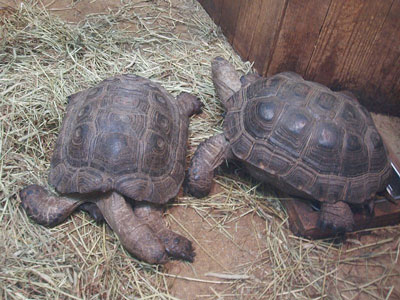
Breeding
The Asian Mountain Tortoise is unequaled among tortoises in its ability to change colors during breeding season. The color of the tortoise is usually yellowish to gray. During the mating season, the color of the head will turn to bright yellow, a startling pink or white. This makes a fantastic difference as the male becomes very visible in the forest background. The color difference can put any decent chameleon to shame.
The courtship ritual is really elaborate. This involves head bobbing followed by fixation. The male initially bobs his head in front of the female to show that he is interested. Then the male extends his head and neck and keeps it pointed towards her as they move around. Perhaps he wants to convince her that his interest is fixed. The next step of wooing is trailing. The male keeps his position right behind the female, closely following her all the time. This happens just before mating. There is a lot of vocalization from either side during courtship. The courtship of Asian Forest Tortoises is never a silent affair.
Housing
You should provide as much space as possible for your pet. Even very young tortoises require 20 gallon tank or tub. A 40 gallon tank will do for the 6. The suggested minimum for adults is 8’x 4’. You should ensure that the habitat provided is secure and waterproof. You should necessarily provide Hides and Shelters. You can provide live, baby-safe plants ‘ They will either eat them or knock them over. You can provide substrates of cypress or hardwood mulch. You can also consider Orchid Bark as an option. There are many books and websites that can help you.
The outdoor pens that you provide for your pets should be predator-proof, escape-proof and theft-proof. Plant vegetation to provide food and concealment. You have to provide fresh water as well as hides. If the night temperatures are below 65-70 degree F, you should provide a heated shelter. If the days are hot and dry, you can arrange for a misting or a sprinkler system.
Food
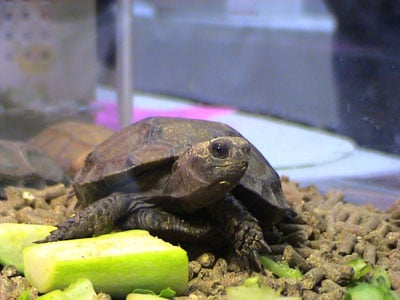
Asian forest tortoises are scavengers and browsers in general. You should provide fresh meals at least thrice a week. You can offer Leafy greens, which include mustard, turnip, collard greens and kale, leaf lettuce, dandelions, along with fruits and even carrion. Avoid Citrus fruits. You can however give them berries and melons. A varied diet is the healthiest feeding method. It will replicate their food in the wild.
Handling
As long as you can meet the necessary environmental conditions, you can take care of these lovable reptiles quite easily.

Having discovered a fondness for insects while pursuing her degree in Biology, Randi Jones was quite bugged to know that people usually dismissed these little creatures as “creepy-crawlies”.

